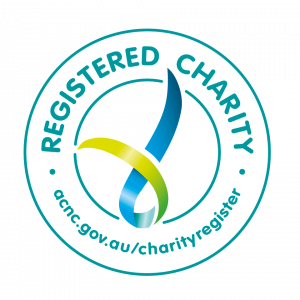
‘Gut health’ and the ‘microbiome’ are having a moment in the spotlight right now…and for good reason! The little cohabiting critters that make up our microbiome really do play a huge role in many aspects of our health. In fact, did you know that we humans have more microbial cells than human cells? This mind-blowing fact offers a sneak peak into why it is so important for us to look after the health of the trillions of microbes living within us. They literally outnumber us! (1)
What exactly is a ‘microbiome’?
The term ‘microbiome’ describes the community of bacteria, fungi, protazoa, archaea, and viruses that hang out in various corners of our bodies. (1) The gut microbiome, where most of these bugs congregate, is probably the most well-known and well-researched microbiome, however, microbiomes also exist in other parts of the body, such as on the skin, in the mouth, and in the vagina. (1)
The Gut Microbiome, Health and Disease
Most of the intestinal microbes that make up your ‘gut microbiome’ reside in the large intestine, and the role that these gut bugs play in human health and disease is a hot topic in the research world. (2) The gut microbiome is involved in the healthy function of your immune system, metabolism, nutrition status, mental health, and numerous bodily functions. (2) An imbalance in the gut bug population has been associated with an increase in Irritable Bowel Syndrome (IBS), Inflammatory Bowel Disease (IBD), obesity, type 2 diabetes, allergies, and eczema. (2)
Early Development of the Gut Microbiome
Whilst the womb was once considered a sterile environment, evidence has recently pointed to the existence of microorganisms in the placenta, amniotic fluid, umbilical chord, and fetal membranes, suggesting that fetal gut colonisation may start before birth. (3) A baby’s gut microbiome then undergoes rapid alterations in the first couple of years after birth, dependant on a variety of environmental factors, including birth delivery mode, and early feeding practices. (4) Although constantly fluctuating, the largest shift occurs in the population of a child’s microbiome once solid foods are introduced. (5) By around age three, a child’s microbiome will have stabilised, more closely resembling an adult gut microbiome. (5) This early malleability in the gut population suggests that these years may be disproportionately important in the development of a healthy gut, impacting the future heath of the child right into adulthood. (5)
Early Life Impact on Immune System
One of the strongest influences that early gut health will have on the future health of a child is through its close interaction with the immune system. (3) In fact, it is thought that achieving a favourable balance of gut bugs during these earlier years can drastically reduce the chances of a child developing allergies, eczema, asthma, and autoimmune disease. (3) These diseases have been on the rise over the last few decades, and data suggests that a change in our lifestyle and environments has led to a reduction of exposure to different microbes in those critical earlier years. (3) It has also been recognised that the influence of the gut microbes on immune development probably begins in utero, highlighting the importance of the mother’s health during, and even prior to, pregnancy. (3)
What Does a Healthy Gut Look Like?
Gut microbiome populations are as individual as people’s fingerprints. Whilst there are still many unknowns in the world of microbiome research, one thing is clear; the more diverse the gut population, the healthier the human. (6) Unfortunately, the typical Western diet, generally high in ultra-processed carbs, animal proteins, and saturated fats, and low in fibre, fermented foods, and the beneficial chemicals found in plants, has been shown to reduce this gut diversity, and is associated with an increase in ‘inflammatory’ illness. (5)
Supporting Healthy Gut Development
The best way to ensure you are supporting a diverse gut microbiome is by introducing a diverse range of plant foods into the diet, including vegetables, fruits, nuts, seeds, whole grains and legumes. (4) Reducing environmental stressors like cigarette smoke, stress, and pollution, encouraging a good sleep routine, breastfeeding if possible, owning a pet, and avoiding unnecessary antibiotic use can all also help support the development of a healthy gut microbiome for your child. (4)
Keywords: Gut Health, Microbiome, Immune system, Environment
References:


This website and the information it contains is not intended as a substitute for professional consultation with a qualified practitioner.
© MothersBabies Ltd. View our Terms of Use & Privacy Policy
Search MothersBabies
Looking for something in particular? Find it here using our search query function. Simply type in your keyword and click the icon.
Recent Articles
Join Us